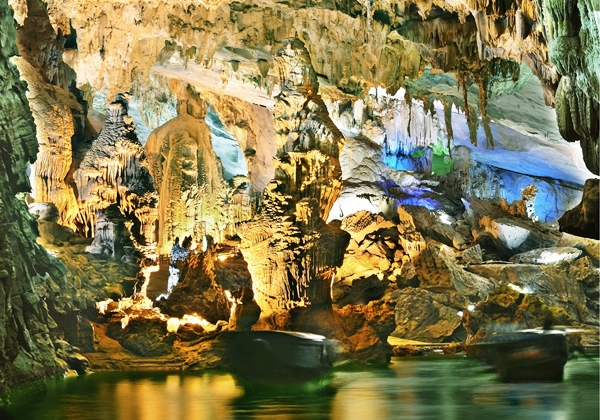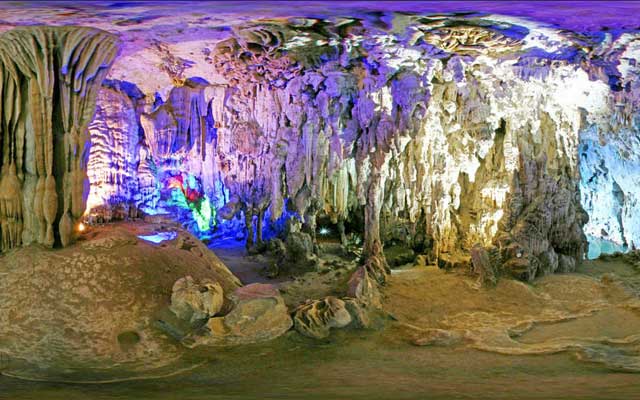Macau is a Special Administrative Region (SAR) of China. Located across the Pearl River estuary from Hong Kong, until 1999 Macau was an overseas territory of Portugal. One of the world’s most densely populated spots, Macau is best known as Asia’s largest destination for gambling taking in even more revenue than Las Vegas. You could go to Macau for a trip when you come to Guangzhou for Guangzhou Fair.

As the first and last European colony in Asia, Macau has more visible colonial history than Hong Kong. Walking through the old city you could convince yourself you were in Europe – if the streets were devoid of people and Chinese-language signage, that is. The Portuguese and Macanese population continues to maintain a presence, but most of the population is native Chinese.
Besides the city itself, Macau includes the islands of Taipa and Coloane, which are connected to Macau by bridges and to each other by a causeway, now built up into the Cotai Strip. The Chinese city of Zhuhai borders Macau to the north, and the border crossing carries heavy two-way vehicular and pedestrian traffic. The Zhuhai Special Economic Zone extends south to Hengqin Island, an area west of Taipa, Cotai and Coloane; the Lotus Bridge from Cotai connects to that area. There is significant movement by the local population of both Zhuhai and Macau across the border, making the two feel like twin cities.
Macau’s economy is based largely on tourism. Other chief economic activities in Macau are export-geared textile and garment manufacturing, banking and other financial services. The clothing industry has provided about three quarters of export earnings, and the gaming, tourism and hospitality industry is estimated to contribute more than 50% of Macau’s GDP, and 70% of Macau government revenue.
Macau is subtropical with hot summers and mild winters. Visitors should note that typhoons often strike from mid-summer to Autumn which could stop many activities there. Although winter is generally mild, there are occasional cold fronts which could make temperatures drop 10°C (50°F) in a day.
According to The World Factbook, Macau has the second highest life expectancy in the world. In addition, Macau is one of the very few regions in Asia with a “very high Human Development Index”, ranking 23rd or 24th in the world in 2007 (with Japan being the highest in Asia; the other Asian countries/regions within the “very high HDI” category are South Korea, Taiwan, Hong Kong, Singapore, and Brunei).
One of the interesting things to see in Macau is a statue of the Bodhisatta Avalokitesvara (known as 觀音 kwoon yam in Cantonese) located next to the sea near the Sands Casino and MGM Grand. Despite being a Chinese deity, the statue is distinctly European in design and resembles the statues of the Virgin Mary you can find in Europe.
And if history is not your thing, there is the Macau Tower of awesome views and adventure sports, or Fisherman’s Wharf to enjoy some theme-park activities and shopping.
You’ll find most of the attractions in Macau Peninsula, but Taipa and Coloane, each with a pretty village, also draw hordes of visitors. Visit the Cotai reclaimed land area to see its transformation into the “Las Vegas Strip of the East”. The Venetian is the most famous with its Venice-styled shopping mall with rivers running through, and is also currently the largest casino in the world.
The City of Dreams is a giant casino with high end fashion shops, a free video ‘bubble’ show, three hotels and the world’s most expensive theatre show. The ‘House of Dancing Water’ cost US$250 million and the stage holds five olympic swimming pools worth of water. Ushers give the front few rows of the audience towels. Free shuttles from the main ferry terminal leave constantly.

A large section of Macau Peninsula has been designated a Unesco World Heritage site and 25 buildings and sites within the area have been deemed to have cultural and historic significance. One of the best ways to cover the sights is to do the Macau Heritage Walk circuit. The heritage Buildings, the Sao Paulo Cathedral, the Fort and the Macau Museum are all adjacent to each other and can be conveniently seen individually even if one cannot catch the Heritage walk timing.
Taipa Village and Coloane Village, previously inhabited by fishermen, are also interesting with their colonial-era shops and houses along narrow lanes.
Macau has several museums. The “Macau Museum Pass”, which gives discounted entry to most of these, is currently off the market. The main museums, such as the Macau Museum, are in Macau Peninsula although there are two museums on Taipa – the Museum of Taipa and Coloane History and Taipa Houses Museum.







































